Alberta
Calls for a new pipeline to the coast are only getting louder

From Resource Works
Alberta wants a new oil pipeline to Prince Rupert in British Columbia.
Calls on the federal government to fast-track new pipelines in Canada have grown. But there’s some confusion that needs to be cleared up about what Ottawa’s intentions are for any new oil and gas pipelines.
Prime Minister Carney appeared to open the door for them when he said, on June 2, that he sees opportunity for Canada to build a new pipeline to ship more oil to foreign markets, if it’s tied to billions of dollars in green investments to reduce the industry’s environmental footprint.
But then he confused that picture by declaring, on June 6, that new pipelines will be built only with “a consensus of all the provinces and the Indigenous people.” And he added: “If a province doesn’t want it, it’s impossible.”
And BC Premier David Eby made it clear on June 2 that BC doesn’t want a new oil pipeline, nor does it want Ottawa to cancel the related ban on oil tankers steaming through northwest BC waters. These also face opposition from some, but not all, First Nations in BC.
Eby’s energy minister, Adrian Dix, also gave thumbs-down to a new oil pipeline, but did say BC supports expanding the capacity of the existing Trans Mountain TMX oil pipeline, and the dredging of Burrard Inlet to allow bigger oil tankers to load Alberta oil from TMX at the port of Vancouver.
While the feds sort out what their position is on fast-tracking new pipelines, Alberta Premier Danielle Smith leaped on Carney’s talk of a new oil pipeline if it’s tied to lowering the carbon impact of the Alberta oilsands and their oil.
She saw “a grand bargain,” with, in her eyes, a new oil pipeline from Alberta to Prince Rupert, BC, producing $20 billion a year in revenue, some of which could then be used to develop and install carbon-capture mechanisms for the oil.
She noted that the Pathways Alliance, six of Canada’s largest oilsands producers, proposed in 2021 a carbon-capture network and pipeline that would transport captured CO₂ from some 20 oilsands facilities, by a new 400-km pipeline, to a hub in the Cold Lake area of Alberta for permanent underground storage.
Preliminary estimates of the cost of that project run up to $20 billion.
The calls for a new oil pipeline from Bruderheim, AB, to Prince Rupert recall the old Northern Gateway pipeline project that was proposed to run from Alberta to Kitimat, BC.
That was first proposed by Enbridge in 2008, and there were estimates that it would mean billions in government revenues and thousands of jobs.
In 2014, Conservative prime minister Stephen Harper approved Northern Gateway. But in 2015, the Federal Court of Appeal overruled the Harper government, ruling that it had “breached the honour of the Crown by failing to consult” with eight affected First Nations.
Then the Liberal government of Prime Minister Justin Trudeau, who succeeded Harper in 2015, effectively killed the project by instituting a ban on oil tanker traffic on BC’s north coast shortly after taking office.
Now Danielle Smith is working to present Carney with a proponent and route for a potential new crude pipeline from Alberta to Prince Rupert.
She said her government is in talks with Canada’s major pipeline companies in the hope that a private-sector proponent will take the lead on a pipeline to move a million barrels a day of crude to the BC coast.
She said she hopes Carney, who won a minority government in April, will make good on his pledge to speed permitting times for major infrastructure projects. Companies will not commit to building a pipeline, Smith said, without confidence in the federal government’s intent to bring about regulatory reform.
Smith also underlined her support for suggested new pipelines north to Grays Bay in Nunavut, east to Churchill, Manitoba, and potentially a new version of Energy East, a proposed, but shelved, oil pipeline to move oil from Alberta and Saskatchewan to refineries and a marine terminal in the Maritimes.
The Energy East oil pipeline was proposed in 2013 by TC Energy, to move Western Canadian crude to an export terminal at St. John, NB, and to refineries in eastern Canada. It was mothballed in 2017 over regulatory hurdles and political opposition in Quebec.
A separate proposal known as GNL Quebec to build a liquefied natural gas pipeline and export terminal in the Saguenay region was rejected by both federal and provincial authorities on environmental grounds. It would have diverted 19.4 per cent of Canadian gas exports to Europe, instead of going to the US.
Now Quebec’s environment minister Benoit Charette says his government would be prepared to take another look at both projects.
The Grays Bay idea is to include an oil pipeline in a corridor that would run from northern BC to Grays Bay in Nunavut. Prime Minister Carney has suggested there could be opportunities for such a pipeline that would carry “decarbonized” oil to new markets.
There have also been several proposals that Canada should build an oil pipeline, and/or a natural gas pipeline, to the port of Churchill. One is from a group of seven senior oil and gas executives who in 2017 suggested the Western Energy Corridor to Churchill.
Now a group of First Nations has proposed a terminal at Port Nelson, on Hudson Bay near Churchill, to ship LNG to Europe and potash to Brazil. And the Manitoba government is looking at the idea.
“There is absolutely a business case for sending our LNG directly to European markets rather than sending our natural gas down to the Gulf Coast and having them liquefy it and ship it over,” says Robyn Lore of project backer NeeStaNan. “It’s in Canada’s interest to do this.”
And, he adds: “The port and corridor will be 100 per cent Indigenous owned.”
Manitoba Premier Wab Kinew has suggested that the potential trade corridor to Hudson Bay could handle oil, LNG, hydrogen, and potash slurry. (One obvious drawback, though, winter ice limits the Hudson Bay shipping season to four months of the year, July to October.)
All this talk of new pipelines comes as Canada begins to look for new markets to reduce reliance on the US, following tariff measures from President Donald Trump.
Alberta Premier Smith says: “I think the world has changed dramatically since Donald Trump got elected in November. I think that’s changed the national conversation.”
And she says that if Carney wants a true nation-building project to fast-track, she can’t think of a better one than a new West Coast oil pipeline.
“I can’t imagine that there will be another project on the national list that will generate as much revenue, as much GDP, as many high paying jobs as a bitumen pipeline to the coast.”
Now we need to know what Mark Carney’s stance on pipelines really is: Is it fast-tracking them to reduce our reliance on the US? Or is it insisting that, for a pipeline, “If a province doesn’t want it, it’s impossible.”
Alberta
This is what wasting taxpayer dollars sounds like
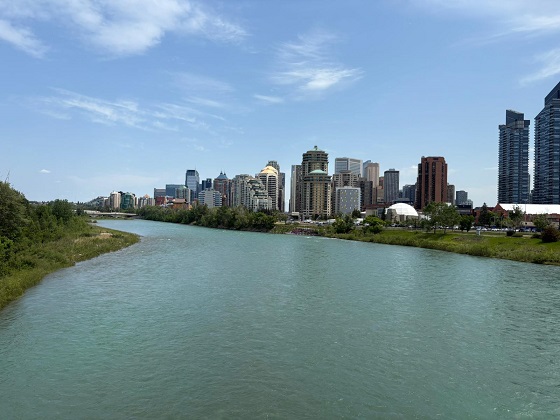
From the Canadian Taxpayers Federation
The Canadian Taxpayers Federation is calling on the City of Calgary to scrap the Calgary Arts Development Authority after it spent $65,000 on a telephone line to the Bow River.
“If someone wants to listen to a river, they can go sit next to one, but the City of Calgary should not force taxpayers to pay for this,” said Kris Sims, CTF Alberta Director. “If phoning a river floats your boat, you do you, but don’t force your neighbour to pay for your art choices.”
The City of Calgary spent $65,194 of taxpayers’ money for an art project dubbed “Reconnecting to the Bow” to set up a telephone line so people could call the Bow River and listen to the sound of water.
The project is running between September 2024 and December 2025, according to documents obtained by the CTF.
The art installation is a rerun of a previous version set up back in 2014.
Emails obtained by the CTF show the bureaucrats responsible for the newest version of the project wanted a new local 403 area code phone number instead of an 1-855 number to “give the authority back to the Bow,” because “the original number highlighted a proprietary and commercial relationship with the river.”
Further correspondence obtained by the CTF shows the city did not want its logo included in the displays, stating the “City of Calgary (does NOT want to have its logo on the artworks or advertisements).”
Taxpayers pay about $19 million per year for the Calgary Arts Development Authority. That’s equivalent to the total property tax bill for about 7,000 households.
Calgary bureaucrats also expressed concern the project “may not be received well, perceived as a waste of money or simply foolish.”
“That city hall employee was pointing out the obvious: This is a foolish waste of taxpayers’ money and this slush fund should be scrapped,” said Sims. “Artists should work with willing donors for their projects instead of mooching off city hall and forcing taxpayers to pay for it.”
Alberta
Second body recovered from Bow Glacier Falls rockslide. Police identify first victim
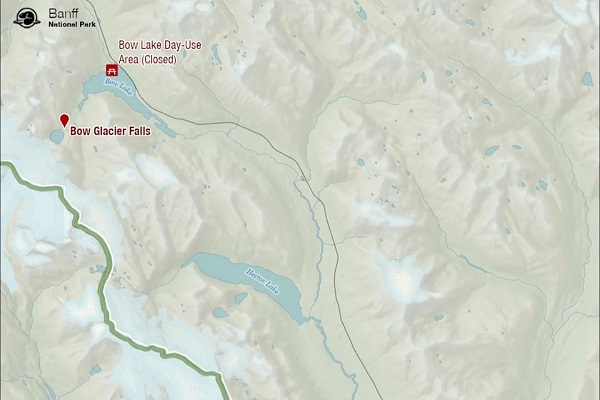
News release from the RCMP and Parks Canada
Parks Canada and RCMP continue to respond to a rockslide at Bow Glacier Falls near Bow Lake, approximately 37 km north of Lake Louise in Banff National Park. Search and rescue operations resumed at 6:30 am on June 20, 2025.
RCMP confirm that the individual located deceased at the scene on June 19, 2025, was a 70-year-old female resident of Calgary, Alberta. RCMP also confirm that a second deceased individual was recovered on the morning of June 20, 2025. RCMP is notifying their next of kin and no further information is available at this time. Three individuals transported to hospital by STARS and ground ambulance on June 19, 2025 were all in stable condition at last report.
At this time, there are no additional persons reported missing and no additional unidentified vehicles at the trailhead located at Bow Lake.
Parks Canada and RCMP extend our deepest condolences to the families and friends of the two individuals who lost their lives, our hearts are with them. Our thoughts also remain with those in hospital and we hope for their full recovery.
In a continued effort to complete a thorough assessment, Parks Canada visitor safety teams continue work today with support from a geotechnical engineer with Canada Task Force One (CAN-TF1 Vancouver), as well as members of Canada Task Force Two (CAN-TF2 Calgary) and their partners in the Calgary Police Service.
The safety of first responders and park visitors is our top priority.
Bow Lake and the trail to Bow Hut have reopened. Bow Glacier Falls remains closed to all visitors. The NOTAM (no-fly zone) remains in place to ensure public safety and for park operations. Parks Canada and RCMP thank visitors for giving teams space to work safely.
The Icefields Parkway (Highway 93N) remains open with potential intermittent, short-term traffic stoppages in the vicinity of the incident. Heavy precipitation including snow is occurring on the Icefields Parkway. Please check the weather forecast and Alberta 511 before travelling.
Banff National Park remains open and safe to visit.
Updates will be provided as more information is available.
BACKGROUND:
RCMP AND PARKS CANADA – JOINT STATEMENT #2
June 20, 2025 8:10 AM
Lake Louise, Alberta – On June 19, 2025, at 1 pm Parks Canada received a report of a serious rockfall at Bow Glacier Falls located west of the Icefields Parkway (Highway 93N) near Bow Lake, which is approximately 37 km north of Lake Louise in Banff National Park.
Parks Canada wardens and RCMP remained on site overnight. Parks Canada visitor safety teams will continue working today with support from Canada Task Force Two (CAN-TF2 Calgary), a national disaster response team.
CAN-TF2 is conducting infrared flights, through their partners in the Calgary Police Service, in a continued effort to complete a thorough assessment. A Canada Task Force One (CAN-TF1 Vancouver) geotechnical engineer will conduct a slope stability assessment. The safety of first responders and park visitors is our top priority.
As reported yesterday, one person was located deceased at the location on June 19th. RCMP are working to notify next of kin. No further information about this individual is available.
Bow Lake remains closed to all visitors. A NOTAM (no-fly zone) remains in place to ensure public safety and for park operations. Parks Canada and RCMP thank visitors for giving teams space to work safely.
Alpine Club of Canada guests staying at Bow Hut are safe. Visitors staying at Bow Hut will be able to exit on schedule via the usual route, which is unaffected and safe to travel.
The Icefields Parkway (Highway 93N) remains open with potential intermittent, short-term traffic stoppages in the vicinity of the incident. Heavy precipitation including snow occurring on the Icefields Parkway. Please check the weather forecast and Alberta 511 before travelling.
Banff National Park remains open and safe to visit.
-

 espionage1 day ago
espionage1 day agoFrom Sidewinder to P.E.I.: Are Canada’s Political Elites Benefiting from Beijing’s Real Estate Reach?
-
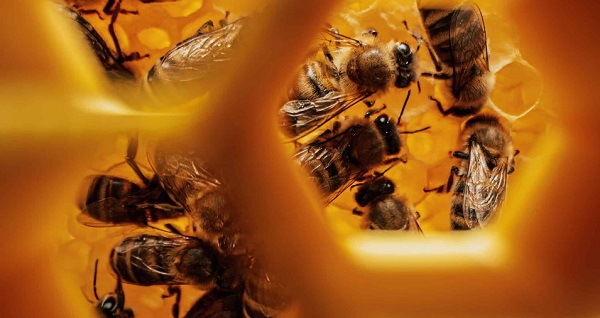
 Agriculture1 day ago
Agriculture1 day agoUnstung Heroes: Canada’s Honey Bees are not Disappearing – They’re Thriving
-

 Daily Caller2 days ago
Daily Caller2 days agoUnanimous Supreme Court Ruling Inspires Hope For Future Energy Project Permitting
-
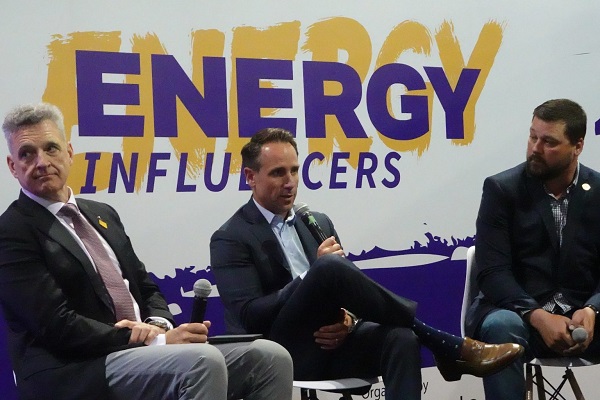
 Alberta2 days ago
Alberta2 days agoAlberta’s carbon diet – how to lose megatonnes in just three short decades
-
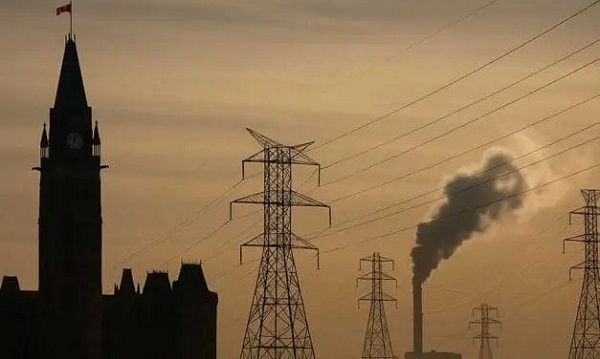
 Energy1 day ago
Energy1 day agoWho put the energy illiterate in charge?
-

 Business2 days ago
Business2 days agoRFK Jr. planning new restrictions on drug advertising: report
-
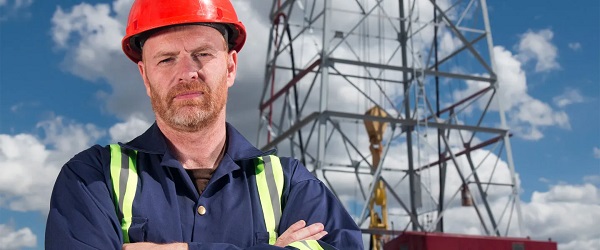
 Business1 day ago
Business1 day agoSenator wants to torpedo Canada’s oil and gas industry
-

 espionage1 day ago
espionage1 day agoFBI Buried ‘Warning’ Intel on CCP Plot to Elect Biden Using TikTok, Fake IDs, CCP Sympathizers and PRC Students—Grassley Probes Withdrawal






